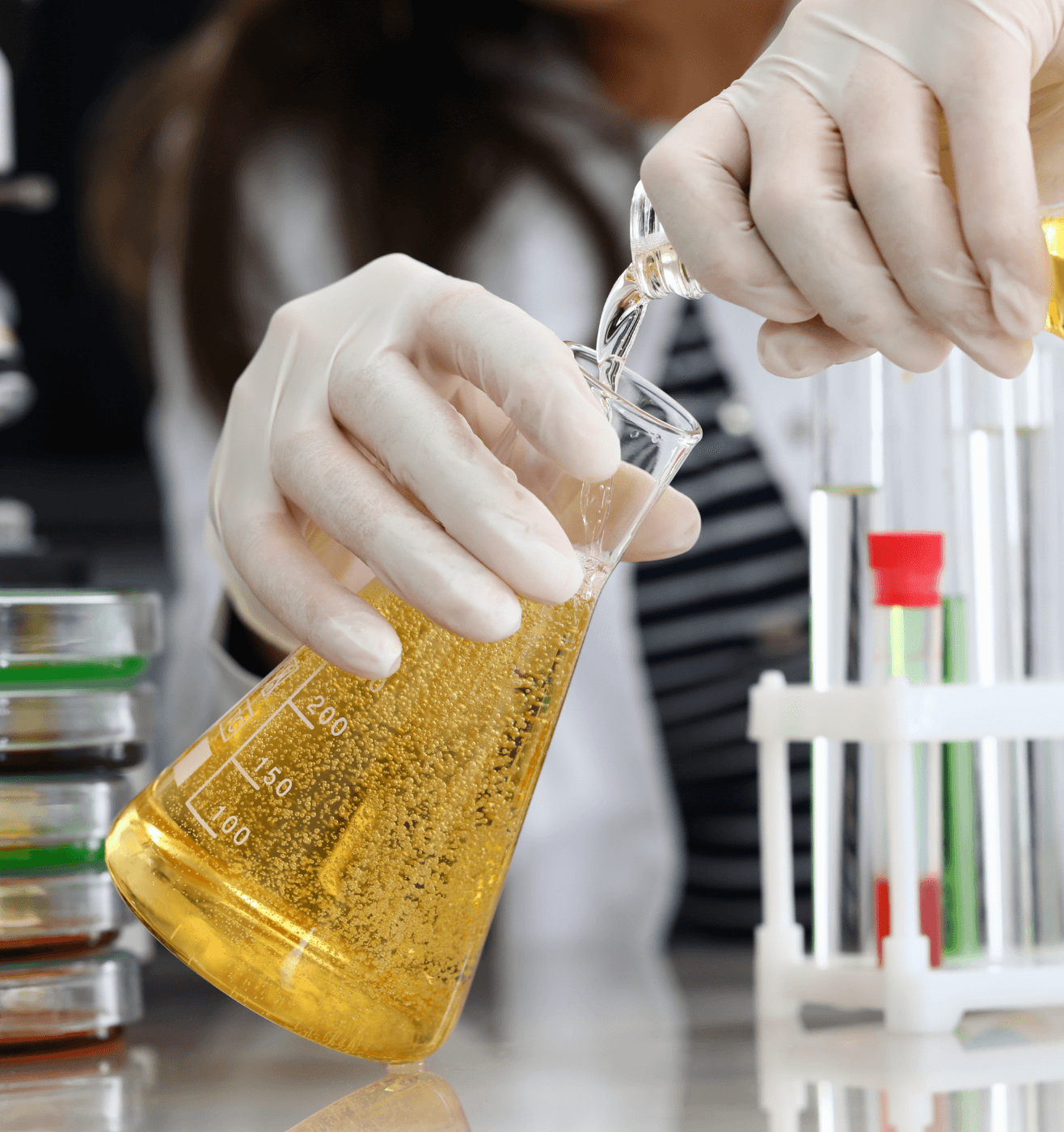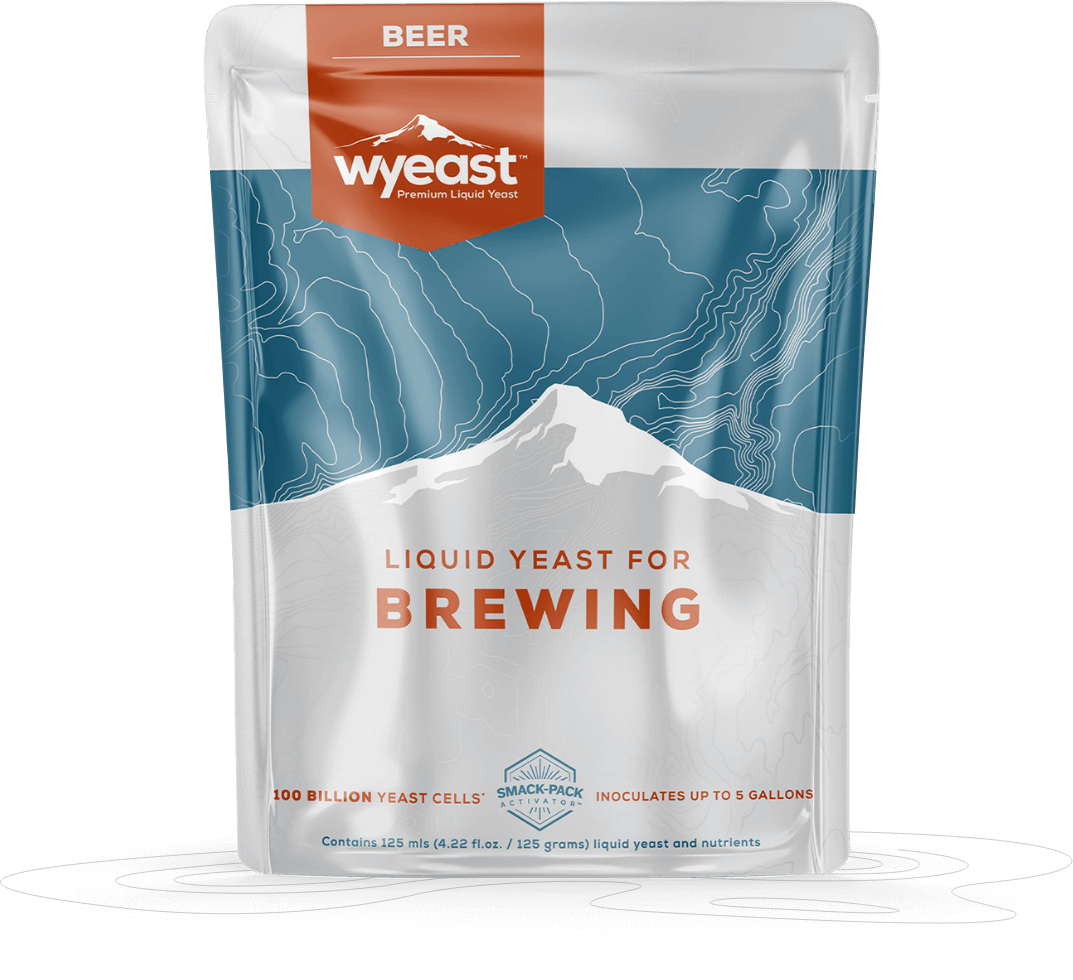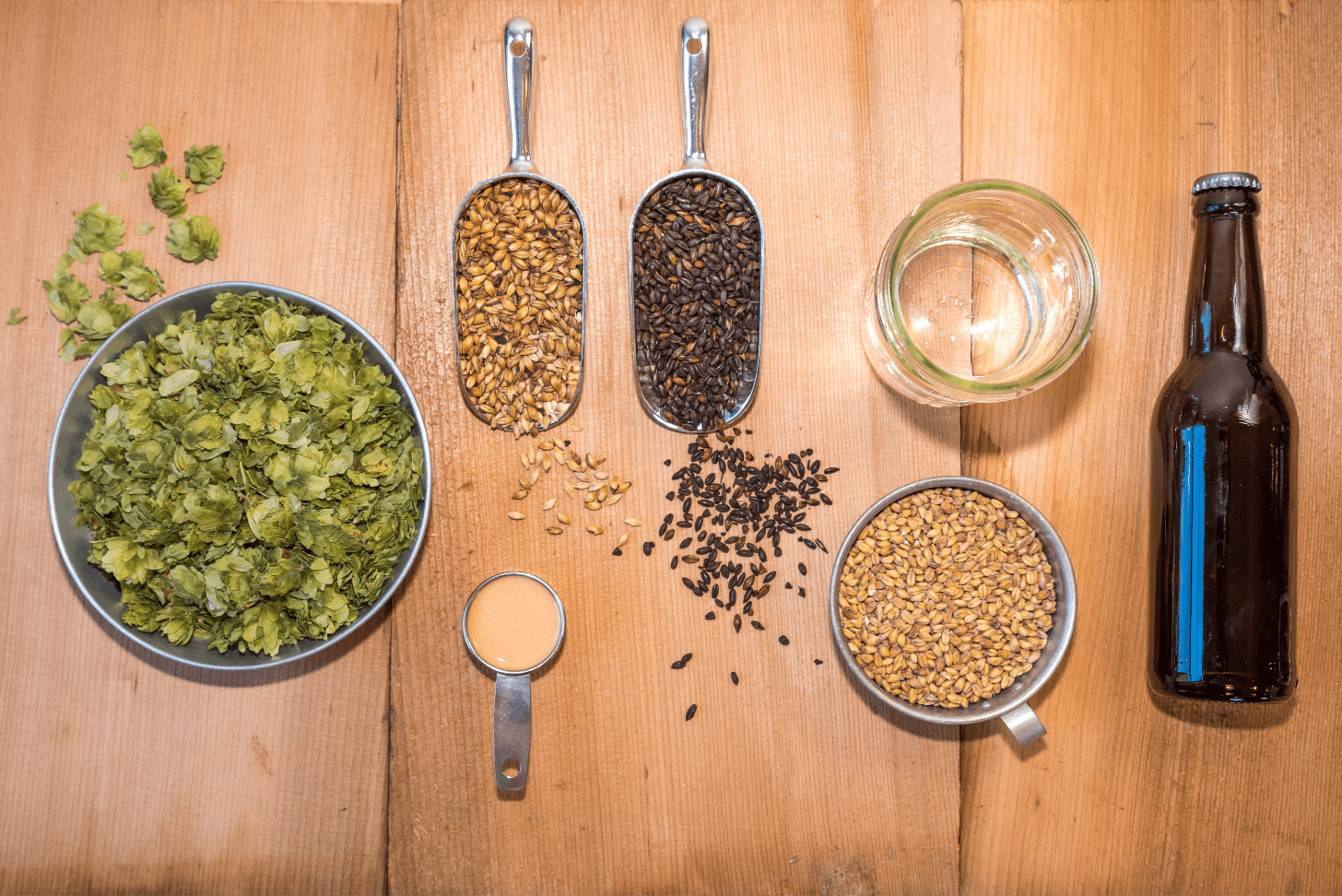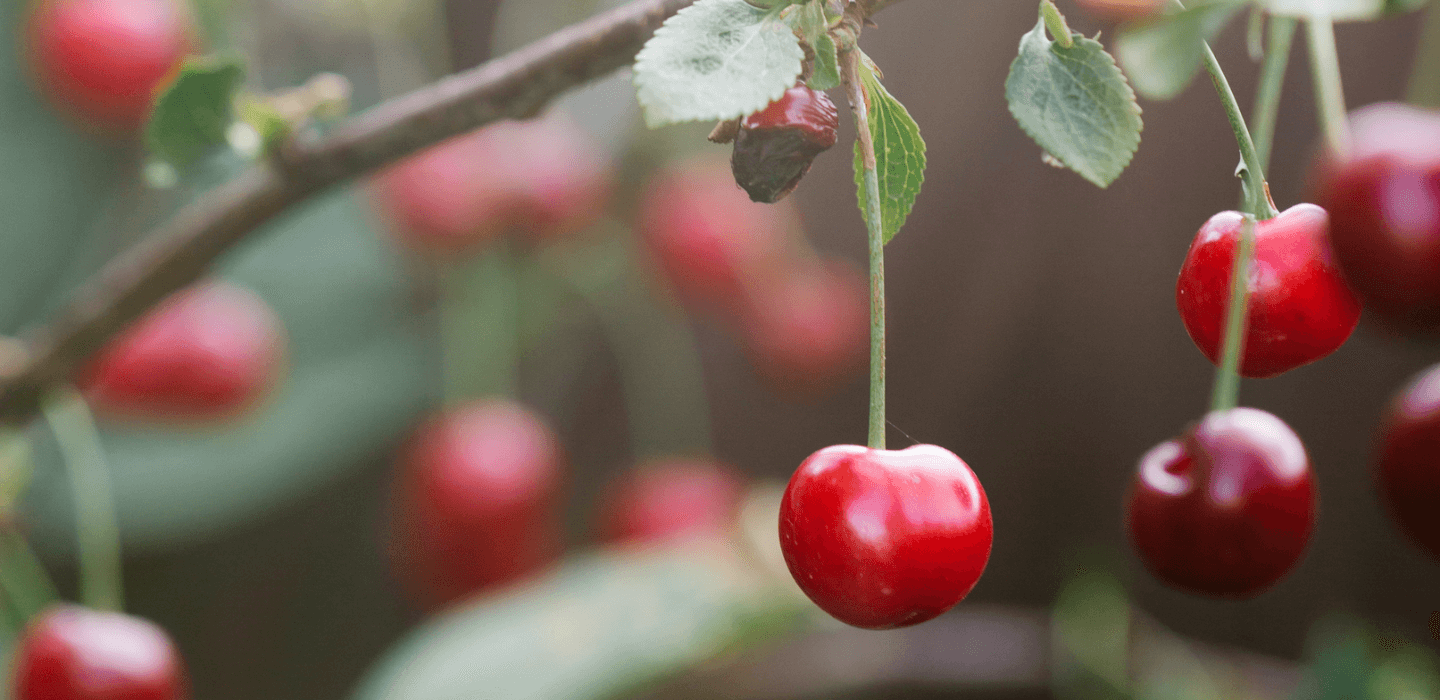
Yeast and Cultures
For 35 years Wyeast has been the leader in producing premium fermentation products. Our liquid yeast strains and cultures are recognized around the world, and we’ve partnered with some of the most successful craft beverage brands.
About Wyeast
Search our most frequently asked questions, with answers tailored to home enthusiasts, professionals, and retailers.
Decades of experience

About Wyeast
We’re committed to creating the finest fermentation products available. From our science-based approach to our dedicated customer service, we’ll do everything we can to ensure that our yeast strains are thriving when they hit your wort, and that they reliably deliver the flavor and character you desire.

The name Wyeast means a lot to our region, because it is said to be the legendary name of Mount Hood. According to local Native American legend, there was an epic battle between two brothers, Wy’east and Klickitat, over the beautiful Loowit. The struggle was so fierce that the Great Spirit transformed them all into mountains. Klickitat became Mt. Adams, Loowit became Mount St. Helens, and Wy’east became Mt. Hood. While many variations of the story have been told and the true origin of the name shrouded by history, we take the heritage of the region to heart with our own story of “Why-Yeast”.
From Lewis and Clark to modern adventurers, curious minds have long been drawn to Hood River. Those exploring the possibilities offered by hops, malts, grapes and apples have inspired our love for variety and experimentation. This has led us to create an extensive collection of yeast strains and fermentation products over the last 35 years. In that time, we’ve helped feed the minds and nurture the success of some of the world’s most inventive craft beverage makers.
From Lewis and Clark to modern adventurers, curious minds have long been drawn to Hood River. Those exploring the possibilities offered by hops, malts, grapes and apples have inspired our love for variety and experimentation.
Title 1
From beer to saké, cider to spirits, our liquid yeast strains are quality tested and assured.From beer to saké, cider to spirits, our liquid yeast strains are quality tested and assured.From beer to saké, cider to spirits, our liquid yeast strains are quality tested and assured.
Title 2
From beer to saké, cider to spirits, our liquid yeast strains are quality tested and assured.From beer to saké, cider to spirits, our liquid yeast strains are quality tested and assured.From beer to saké, cider to spirits, our liquid yeast strains are quality tested and assured.
Title 3
From beer to saké, cider to spirits, our liquid yeast strains are quality tested and assured.From beer to saké, cider to spirits, our liquid yeast strains are quality tested and assured.From beer to saké, cider to spirits, our liquid yeast strains are quality tested and assured.

Contact Us
From beer to saké, cider to spirits, our liquid yeast strains are quality tested and assured.From beer to saké, cider to spirits, our liquid yeast strains are quality tested and.

About Wyeast
From beer to saké, cider to spirits, our liquid yeast strains are quality tested and assured.From beer to saké, cider to spirits, our liquid yeast strains are quality tested and assured.From beer to saké, cider to spirits, our liquid yeast strains are quality tested and assured.
Approximately how long do you have to shake a 5 gallon (19L) carboy to get oxygen saturation (8 ppm)?
45 seconds of vigorous shaking.
Can a commercial operation propagate yeast for a large fermenter starting from a smaller fermenter?
Yes. The 1-Step-10-Fold propagation is the most common method, which involves inoculating a small volume of wort, allowing it to attenuate 50-75%, then adding on top a 10-fold volume of oxygenated wort.
Can Activators be used for Propagation?
Activators are designed for small, home enthusiast-scale fermentations and should never be used for propagation on a commercial scale. Propagating from such a small volume can lead to off flavors, changes in attenuation performance, introduction of contaminants, among other serious issues. We recommend using a direct pitch appropriate for your commercial brewing needs.
Can I use an Activator package without activating it and waiting for it to swell?
Yes. An Activator pack has enough yeast in it to pitch 5 gallons (19 L) whether it is activated or not. There will only be a slightly longer lag time if the package is not activated before use. In any case, the nutrient pack should be popped before using because it contains valuable nutrients. Typically, the Activator can be activated when you start your brew and will be swollen by the time your wort is cool.
Do I need to make a starter for an Activator?
No. The Activator is designed to deliver professional pitch rates (6 million cells/mL) when directly added to 5 gallons (19 L) of wort. (<1.060 at 70 °F/ 21 °C). However, if a package is slow to swell, suspected of being mishandled, or if the Best if Used By date is approaching, it is a good idea to build the culture up with a starter. High gravity or low temperature fermentations require higher pitch rates. This can be achieved with inoculating with additional packages or making a starter.
Do you need more yeast for high gravity fermentations?
Yes, anytime you are pitching yeast into a harsh environment (high gravity, low temp) you need to add additional yeast. A rough rule of thumb is to double pitch rates above 1.065 and triple pitch rates above 1.085. Or, more technically, a million cells per mL per °Plato are needed for a 20 °Plato (1.080 specifice gravity) beer, or 3 Activator packages for a 5 gallon (19 L) batch. It is also important to remember that it is more difficult to get oxygen into the solution in a high gravity wort.
Does the cell count increase when the package is activated?
The cell count does not increase significantly when the package is activated. The smack-pack is not designed to dramatically increase the cell count, it simply “activates” the yeast metabolism.
Does the package need to be fully swollen before pitching?
No, The package can be pitched before activating, or at anytime during the activation process. The activation process “jump starts” the culture’s metabolism, minimizing the lag phase.
How can I tell when malolactic fermentation is complete?
To monitor the malic acid decrease and increase of lactic acid, commercial wineries can use specialized tests such as high performance liquid chromatography (HPLC) or enzymatic reaction using enzyme test kits. MLF would be considered complete with a result of <0.05 g/L. For a basic method in small wineries, paper chromatography can be used to determine if malolactic fermentation is completed prior to bottling or aging.
How do I become a Wyeast retailer or distributor?
Fill out our Become a Retail Customer form here
How do you achieve higher than 8 ppm O2 levels in your wort?
By injecting pure oxygen into your wort through a stone (1 min for 12 ppm). Or, by flowing pure oxygen into the carboy’s head space and shaking for 20 seconds, twice.
How long do you have to run a stone with an aquarium pump to achieve O2 saturation (8 ppm) in 5 gallons (19 L) of wort?
5 minutes.
How long should it take for a package to swell?
If a package is 4 months or more from the Best if Used By date, the package should show signs of swelling within 3-5 hours and typically much faster than that. When the yeast is stored for long periods of time, they slowly consume their energy reserves (glycogen). When the energy reserves get low, the yeast are slow to produce CO2 and therefore are slow to cause swelling in the package. Improper storage at warm temperatures also has the same effect as long storage times.
I am a commercial brewery or beverage producer – how do I order yeast and other fermentation products?
Fill out our Become a Commercial Customer form here
I am a home enthusiast – how do I order yeast and other brewing products?
Currently our products are not available to order from us directly in home enthusiast quantities. You can find your nearest retail location that sells Wyeast products here
I brewed a high gravity beer and I am having a difficult time getting the beer to attenuate. What went wrong?
There are many factors that lead to incomplete attenuation. At the beginning, it is very important to increase your pitch rates according to the original gravity of your beer. A good rule to follow is a million cells per mL per °Plato. This means that you need 20 million cells per mL for a 20 °Plato (1.080 specific gravity) beer, or 3 Activator packages for a 5 gallon (19 L) batch. It is also important to remember that it is more difficult to get oxygen into the solution in a high gravity wort. At the end of fermentation, high alcohol levels, lack of nutrients, poor yeast health and lack of fermentable sugars can effect attenuation.
I brewed a high gravity beer, can I repitch the yeast from this batch?
Do not repitch yeast from a high gravity beer. Yeast left from high gravity brews is usually very unhealthy or dead and will not perform well in subsequent brews.
I brewed a high gravity beer; can I re-pitch the yeast from this batch?
No. Do not re-pitch yeast from a high gravity beer; the yeast is not healthy and will give you problems in subsequent generations.
I can’t afford to purchase direct pitch quantities, can I still use Wyeast products?
Wyeast sells yeast customized to fit your needs. We will help you to determine a propagation schedule that works with your budget and your system.
I have a sluggish, stalled, or stuck fermentation, and inadequate attenuation. What could be the cause?
Insufficient FAN can lead to sluggish or stuck fermentations and inadequate attenuation. In some cases the batch could have been underpitched in relation to the batch volume and original gravity of the wort. Review the recommended amount of yeast nutrient and pitch rate recommended for your fermentation volume, gravity, and temperature to prevent these issues from occurring.
I pitched my yeast and I’m not seeing any activity in my blow-off or airlock. Should I pitch more yeast?
Always take a gravity reading before making any assumptions. It is not unusual for blow-offs or airlocks to have leaks and therefore show no activity. A gravity reading is the only way to get an accurate idea of what is happening in your fermenter. If you take a gravity reading and it still shows no activity, then you must try to figure out what is inhibiting fermentation. The only factors that could keep the yeast from fermenting are: temperatures too low or too high at run-in, no oxygenation at run-in, pitch rates too low, or a very unhealthy yeast culture. The most common problem is the run-in temperature. If the temperature was too low, warm up the wort. If the temperature was too high, the culture is most likely irreversibly damaged and you need to pitch more yeast immediately. Oxygenation and agitation will also stimulate the yeast and speed the onset of fermentation.
I pitched my yeast and I’m not seeing any activity in my blow-off or airlock. What should I do?
Relax, some fermentations will not show signs of activity for up to 36 hours. If the fermentation is still sluggish after 36 hours take a gravity reading. It is not unusual for blow-offs or airlocks to have leaks and therefore show no activity. A gravity reading is the only way to get an accurate idea of what is happening in your fermenter. If you take a gravity reading and it still shows no activity, then try to figure out what is inhibiting fermentation. The factors that can keep the yeast from fermenting are: temperatures too low or too high at run-in, no oxygenation at run-in, pitch rates too low, or a very unhealthy yeast culture. The most common problem is the run-in temperature. If the temperature was too low, warm up the wort. If the temperature was too high, the culture is most likely irreversibly damaged and you need to pitch more yeast immediately. Oxygenation and agitation will also stimulate the yeast and speed the onset of fermentation.
I popped the inner nutrient pouch and the package swelled tight but I can’t use it right away. What do I do?
If you have activated a package but can’t use it right away, simply allow the package to swell and then refrigerate the package. The yeast will survive for extended periods if refrigerated. Before using, take the package out of the refrigerator and allow it to come up to room temperature before using. It is best to use the yeast as soon as possible.
I propagated my yeast and then brewed in on top of it. My fermentation is very slow or has not started at all. What happened?
When propagating, it is important to pitch at least 10 million cells per mL(1 liter per barrel or hectoliter) to get a rapid, healthy start. Do not exceed a 10 fold increase in volume with each step. Allow each propagation step to attenuate 75% (take a gravity reading, confirming 75% attenuation) before brewing on top. Maintain propagation temperatures of 68-72 °F (20-23 °C) for rapid and healthy growth.
I received my yeast, but was not able to use it right away. How long can I store my yeast before using it?
It is best to use your yeast within 2 weeks of receipt. The length of storage will directly and negatively affect the lag time. If the yeast must be held for more than 2 weeks, it is beneficial to feed the culture before using it. Bring the culture out of cold storage and add it to fresh, well-aerated or oxygenated sterile wort (about 2 gal/7.5 L per 1 liter of yeast). Allow the culture to ferment for 24 to 48 hours at 70 to 75 °F (21 to 24 °C) and then use the culture as you normally would
I’m brewing a lager, do I need to cool my wort to fermentation temperature before adding the yeast?
There are different views on this topic. The individual brewer ultimately has to weigh the pros and cons. If a brewer is to pitch the lager yeast at fermentation temperature (55 °F/ 12 °C and below) then the pitch rate needs to be increased and a slower start to fermentation should be expected. The other option is to pitch the yeast into wort (60-70 °F/ 15-21 °C) and maintain temperature for 24 hours or until signs of active fermentation are evident and then cool to desired fermentation temperature.
If a Retailer is shipping yeast, how should it be packaged?
All yeast shipments should be packed with enough ice to keep the yeast cool until it reaches it’s destination. Remember this is a living organism that will be damaged by extended or repeated periods of warm temperatures.
If there is a problem with the yeast performance, who should the customer contact?
Please contact your local retail supplier of Wyeast Laboratories products and allow them to help you identify and solve the problem. If you have a question they cannot answer, then they can contact Wyeast with your question.
Is the air-lock a good indicator of how a fermentation is proceeding?
No; only by taking a gravity reading can you accurately determine fermentation progress.
Is the yeast in the small inner packet or in the foil pouch itself?
The yeast is in the main foil pouch. The small inner packet contains the sterile nutrient and wort that feeds the yeast before it is added to your fermenter.
My beer is not clearing, what is wrong with my yeast?
Many times protein haze may be mistaken for non-flocculating yeast. First confirm that it is yeast in suspension and not protein by performing a Haze Test.
Haze Determination Test:
Decant 50 mL of hazy beer into a clear sample container. Add 2 mL caustic (40-50%). Shake. If beer turns clear, the problem is protein in suspension. If beer remains cloudy, yeast is still in suspension. Flocculation and clarification are very complex. Many times clarification problems have nothing to do with the yeast, but instead with the environment that the yeast is in. Yeast will flocculate and sediment given time unless something inhibits this. A combination of environmental factors including pH, alcohol content, temperature, sugar concentration, and ion content can negatively affect flocculation and sedimentation. Environmental conditions will affect the flocculation abruptly, showing large differences in subsequent fermentations. It is also possible for yeast to mutate to a less flocculent form. This is usually a very gradual process, over the course of many generations. Every time a brewer harvests their yeast, they have the opportunity to select for a slightly different population. Over a number of generations, the population can show a change in flocculation and thus probably population. It is important for the brewer to try to harvest yeast from the same area in the fermenter to minimize possible changes. (See section on Harvesting)
My beer is releasing an unpleasant rotten egg aroma. What is causing it?
If the beer is confirmed to not be contaminated with any spoilage microorganism, then we can narrow it down to production of sulfur compounds that originated from the malt as an amino acid methionine, and hops. These are produced by the yeast metabolism because yeast requires sulfur compounds for the synthesis amino acids and proteins. Generally, higher concentrations of dimethyl sulfide (DMS) are produced by lager yeast strains. Insufficient yeast growth due to inadequate pitching rates or nutrient deficiency may influence sulfur compounds presence.
My fermentation is not attenuating.
Perform a forced fermentation test on your beer to determine where the problem is coming from. If the forced fermentation does not attenuate, the wort is not fermentable.
Check the mash temperature and times. Did you test for conversion (Iodine)?
Check the mash thermometer.
Check the grist. If the forced fermentation does attenuate- The wort is fermentable, but the fermentation is failing.
What generation are you on?
How long did you store your yeast and at what temperature?
What was your pitch rate in comparison to your original gravity? (See Pitch Rate Section)
Have you checked your oxygenation system for leaks recently to be certain that you are achieving the level of dissolved oxygen required?
Is the fermentation temperature appropriate for the yeast strain?
Have you calibrated your thermometers recently to be certain that the temperature readings you are getting are accurate?
Are you using a yeast nutrient to ensure that you have adequate levels of essential micronutrients and free amino nitrogen?
My fermentation is producing diacetyl. How do I prevent or resolve this issue?
There are several reasons for the production of diacetyl such as: high fermentation temperature, low aeration, yeast strain selection, presence of lactic acid bacteria, and valine deficiency. During fermentation it can be controlled by doing a diacetyl rest in which the yeast has the capacity to remove it and convert it into a non-flavor 2,3 Butanediol.
My fermentation took longer than normal to complete. Is my yeast bad?
Fermentation is dependent on many factors. The issues to consider are: How fresh was your yeast? What was your pitch rate in relation to your original gravity? Is the fermentation temperature appropriate for the yeast strain? Did you effectively oxygenate? Have you calibrated your thermometers lately to be certain that your mash, run in, and fermentation temperatures are accurate? Are you using a yeast nutrient to make up for any nutritional deficiencies? All of these factors plus many more will affect the length and vigor of your fermentation.
Should Brewtan B be added at mashing and end of boiling?
There are several benefits of adding Brewtan B in the different brewing phases. At mashing the filterability of wort increases, allowing a higher lautering capacity. During boiling it increases the hot-break, by removing unwanted material in the wort and aids in obtaining clearer worts, which during filtration will help in allowing longer filter runs.
The Wyeast package at my LHBS is slightly swollen. Is it still OK to use?
Yes. Trace levels of fermentable carbohydrates or CO2 in yeast slurries at the time of packaging may cause a slight expansion in packages. “Off gassing” is a result of a small amount of metabolism or simply CO2 being released from the media and can occur with proper storage. This does not indicate the mishandling of the product or a decline in the health or purity of the culture. Some strains, including 1056 and 1388, are more prone to “off gassing” than others.
What are optimal levels of O2 in wort?
10-15 ppm.
What are the causes of swollen packages? Can you sell them?
Swollen packages are almost always the cause of a small amount of sugar or CO2 being left in solution at the time of packaging. Upon shipment, CO2 can be released from solution or the yeast can consume the sugar and create a small amount of CO2. Cell autolysis, or cell death can also be a cause of swelling packaged. However, this is only in rare cases where the yeast is exposed to high temperature for an extended amount of time. If a package is swollen and has not been mishandled, it can be sold with confidence.
What are the Yeast Assimilable Nitrogen (YAN) or Free Amino Nitrogen (FAN) requirement for fermentation when pitching fresh, healthy yeast?
The proper amount will vary depending on the yeast strain, however the minimum FAN content in the wort should be 220 mg/L (ppm) from which the yeast will required during fermentation 120 mg/L, allowing the rest to left in the beer.
What factors are associated with ester (fruity) production?
Decreased pitch rate of yeast, increased fermentation temperature, and increased original gravity.
What if I want a strain that is not offered in the Wyeast’s normal line-up?
Unfortunately, Wyeast cannot make small quantities of any strain for Home Enthusiasts. However, if there is a certain strain that you would like to see offered, let your local retail supplier know, and they can get in touch with Wyeast. These strains can then be made available through our Private Culture Collection program.
What is the best way to store yeast?
In a refrigerator as cold as possible without freezing. 34 °F (1 °C) is ideal. Most refrigerators run around 40 °F (4°C).
What is the max level of O2 you can get in a carboy using air?
8 ppm.
What pressure range is suitable or recommended for lager yeast strains during fermentation?
Our lager yeast strains can ferment under a pressure of 14.5 PSI (1 Bar).
What questions should be asked to a customer that has a problem fermentation?
What strain, date, size of package, and manufacturing code? What is the gravity and temperature? What was the OG and pitching temp? How many hours since pitching? Did you make a starter? Method of aeration?
What should the gravity of a starter be?
The gravity for a starter should be 1.040.
What should you do if the yeast is frozen?
Thaw out in fridge. Activate and assess the time that it takes to swell. If there is no activation within 24 hours, do not use. If there is activation, make a starter to revive culture.
What should you do if there is no activity in my carboy in the first 24 hours?
Some fermentations will not take off for 36 hours due to many variables. Once past 36 hours, take a gravity reading, make sure that the temperature is warm, and agitate the carboy. Agitate every so often for 12 hours, then take a gravity reading to see if fermentation has begun.
What strains are typically slow activators and slow starters in fermenters?
Belgian Ale #1214 and Belgian Strong Ale #1388 are typically slow starters.
What temperature should I pitch lagers?
More yeast (double- two packages or make a 2L starter) is required for cold fermentations. To compensate for this, pitch one package into 60-68 °F (15-20 °C) wort, allow fermentation to begin, and cool to desired fermentation temperature.
When should Tanal A be added to the beer batch?
It is recommended to use Tanal A during the maturing phase to allow some to settle out and leave the remaining portion in suspension. As well, if the batch has sufficient protein it can be added inline from filtration to the Brite tank.
Which lager yeast strain can ferment at warmer temperatures?
Our 2112 California Lager retains lager characteristics at temperatures up to 65 °F (18°C).
Why does Wyeast sell the Smack-Pack Activator System?
We feel that our Activator is the best product on the market. In addition to the oxygen and UV barrier, our packages include the activator system. This allows the Home Enthusiast to initiate the culture’s metabolism prior to pitching, reducing lag times. This also works as a built-in viability test.
Recommended for Styles
Approximately how long do you have to shake a 5 gallon (19L) carboy to get oxygen saturation (8 ppm)?
45 seconds of vigorous shaking.
Can a commercial operation propagate yeast for a large fermenter starting from a smaller fermenter?
Yes. The 1-Step-10-Fold propagation is the most common method, which involves inoculating a small volume of wort, allowing it to attenuate 50-75%, then adding on top a 10-fold volume of oxygenated wort.
Can Activators be used for Propagation?
Activators are designed for small, home enthusiast-scale fermentations and should never be used for propagation on a commercial scale. Propagating from such a small volume can lead to off flavors, changes in attenuation performance, introduction of contaminants, among other serious issues. We recommend using a direct pitch appropriate for your commercial brewing needs.
Can I use an Activator package without activating it and waiting for it to swell?
Yes. An Activator pack has enough yeast in it to pitch 5 gallons (19 L) whether it is activated or not. There will only be a slightly longer lag time if the package is not activated before use. In any case, the nutrient pack should be popped before using because it contains valuable nutrients. Typically, the Activator can be activated when you start your brew and will be swollen by the time your wort is cool.
Do I need to make a starter for an Activator?
No. The Activator is designed to deliver professional pitch rates (6 million cells/mL) when directly added to 5 gallons (19 L) of wort. (<1.060 at 70 °F/ 21 °C). However, if a package is slow to swell, suspected of being mishandled, or if the Best if Used By date is approaching, it is a good idea to build the culture up with a starter. High gravity or low temperature fermentations require higher pitch rates. This can be achieved with inoculating with additional packages or making a starter.
Do you need more yeast for high gravity fermentations?
Yes, anytime you are pitching yeast into a harsh environment (high gravity, low temp) you need to add additional yeast. A rough rule of thumb is to double pitch rates above 1.065 and triple pitch rates above 1.085. Or, more technically, a million cells per mL per °Plato are needed for a 20 °Plato (1.080 specifice gravity) beer, or 3 Activator packages for a 5 gallon (19 L) batch. It is also important to remember that it is more difficult to get oxygen into the solution in a high gravity wort.
Does the cell count increase when the package is activated?
The cell count does not increase significantly when the package is activated. The smack-pack is not designed to dramatically increase the cell count, it simply “activates” the yeast metabolism.
Does the package need to be fully swollen before pitching?
No, The package can be pitched before activating, or at anytime during the activation process. The activation process “jump starts” the culture’s metabolism, minimizing the lag phase.
How can I tell when malolactic fermentation is complete?
To monitor the malic acid decrease and increase of lactic acid, commercial wineries can use specialized tests such as high performance liquid chromatography (HPLC) or enzymatic reaction using enzyme test kits. MLF would be considered complete with a result of <0.05 g/L. For a basic method in small wineries, paper chromatography can be used to determine if malolactic fermentation is completed prior to bottling or aging.
How do I become a Wyeast retailer or distributor?
Fill out our Become a Retail Customer form here
How do you achieve higher than 8 ppm O2 levels in your wort?
By injecting pure oxygen into your wort through a stone (1 min for 12 ppm). Or, by flowing pure oxygen into the carboy’s head space and shaking for 20 seconds, twice.
How long do you have to run a stone with an aquarium pump to achieve O2 saturation (8 ppm) in 5 gallons (19 L) of wort?
5 minutes.
How long should it take for a package to swell?
If a package is 4 months or more from the Best if Used By date, the package should show signs of swelling within 3-5 hours and typically much faster than that. When the yeast is stored for long periods of time, they slowly consume their energy reserves (glycogen). When the energy reserves get low, the yeast are slow to produce CO2 and therefore are slow to cause swelling in the package. Improper storage at warm temperatures also has the same effect as long storage times.
I am a commercial brewery or beverage producer – how do I order yeast and other fermentation products?
Fill out our Become a Commercial Customer form here
I am a home enthusiast – how do I order yeast and other brewing products?
Currently our products are not available to order from us directly in home enthusiast quantities. You can find your nearest retail location that sells Wyeast products here
I brewed a high gravity beer and I am having a difficult time getting the beer to attenuate. What went wrong?
There are many factors that lead to incomplete attenuation. At the beginning, it is very important to increase your pitch rates according to the original gravity of your beer. A good rule to follow is a million cells per mL per °Plato. This means that you need 20 million cells per mL for a 20 °Plato (1.080 specific gravity) beer, or 3 Activator packages for a 5 gallon (19 L) batch. It is also important to remember that it is more difficult to get oxygen into the solution in a high gravity wort. At the end of fermentation, high alcohol levels, lack of nutrients, poor yeast health and lack of fermentable sugars can effect attenuation.
I brewed a high gravity beer, can I repitch the yeast from this batch?
Do not repitch yeast from a high gravity beer. Yeast left from high gravity brews is usually very unhealthy or dead and will not perform well in subsequent brews.
I brewed a high gravity beer; can I re-pitch the yeast from this batch?
No. Do not re-pitch yeast from a high gravity beer; the yeast is not healthy and will give you problems in subsequent generations.
I can’t afford to purchase direct pitch quantities, can I still use Wyeast products?
Wyeast sells yeast customized to fit your needs. We will help you to determine a propagation schedule that works with your budget and your system.
I have a sluggish, stalled, or stuck fermentation, and inadequate attenuation. What could be the cause?
Insufficient FAN can lead to sluggish or stuck fermentations and inadequate attenuation. In some cases the batch could have been underpitched in relation to the batch volume and original gravity of the wort. Review the recommended amount of yeast nutrient and pitch rate recommended for your fermentation volume, gravity, and temperature to prevent these issues from occurring.
I pitched my yeast and I’m not seeing any activity in my blow-off or airlock. Should I pitch more yeast?
Always take a gravity reading before making any assumptions. It is not unusual for blow-offs or airlocks to have leaks and therefore show no activity. A gravity reading is the only way to get an accurate idea of what is happening in your fermenter. If you take a gravity reading and it still shows no activity, then you must try to figure out what is inhibiting fermentation. The only factors that could keep the yeast from fermenting are: temperatures too low or too high at run-in, no oxygenation at run-in, pitch rates too low, or a very unhealthy yeast culture. The most common problem is the run-in temperature. If the temperature was too low, warm up the wort. If the temperature was too high, the culture is most likely irreversibly damaged and you need to pitch more yeast immediately. Oxygenation and agitation will also stimulate the yeast and speed the onset of fermentation.
I pitched my yeast and I’m not seeing any activity in my blow-off or airlock. What should I do?
Relax, some fermentations will not show signs of activity for up to 36 hours. If the fermentation is still sluggish after 36 hours take a gravity reading. It is not unusual for blow-offs or airlocks to have leaks and therefore show no activity. A gravity reading is the only way to get an accurate idea of what is happening in your fermenter. If you take a gravity reading and it still shows no activity, then try to figure out what is inhibiting fermentation. The factors that can keep the yeast from fermenting are: temperatures too low or too high at run-in, no oxygenation at run-in, pitch rates too low, or a very unhealthy yeast culture. The most common problem is the run-in temperature. If the temperature was too low, warm up the wort. If the temperature was too high, the culture is most likely irreversibly damaged and you need to pitch more yeast immediately. Oxygenation and agitation will also stimulate the yeast and speed the onset of fermentation.
I popped the inner nutrient pouch and the package swelled tight but I can’t use it right away. What do I do?
If you have activated a package but can’t use it right away, simply allow the package to swell and then refrigerate the package. The yeast will survive for extended periods if refrigerated. Before using, take the package out of the refrigerator and allow it to come up to room temperature before using. It is best to use the yeast as soon as possible.
I propagated my yeast and then brewed in on top of it. My fermentation is very slow or has not started at all. What happened?
When propagating, it is important to pitch at least 10 million cells per mL(1 liter per barrel or hectoliter) to get a rapid, healthy start. Do not exceed a 10 fold increase in volume with each step. Allow each propagation step to attenuate 75% (take a gravity reading, confirming 75% attenuation) before brewing on top. Maintain propagation temperatures of 68-72 °F (20-23 °C) for rapid and healthy growth.
I received my yeast, but was not able to use it right away. How long can I store my yeast before using it?
It is best to use your yeast within 2 weeks of receipt. The length of storage will directly and negatively affect the lag time. If the yeast must be held for more than 2 weeks, it is beneficial to feed the culture before using it. Bring the culture out of cold storage and add it to fresh, well-aerated or oxygenated sterile wort (about 2 gal/7.5 L per 1 liter of yeast). Allow the culture to ferment for 24 to 48 hours at 70 to 75 °F (21 to 24 °C) and then use the culture as you normally would
I’m brewing a lager, do I need to cool my wort to fermentation temperature before adding the yeast?
There are different views on this topic. The individual brewer ultimately has to weigh the pros and cons. If a brewer is to pitch the lager yeast at fermentation temperature (55 °F/ 12 °C and below) then the pitch rate needs to be increased and a slower start to fermentation should be expected. The other option is to pitch the yeast into wort (60-70 °F/ 15-21 °C) and maintain temperature for 24 hours or until signs of active fermentation are evident and then cool to desired fermentation temperature.
If a Retailer is shipping yeast, how should it be packaged?
All yeast shipments should be packed with enough ice to keep the yeast cool until it reaches it’s destination. Remember this is a living organism that will be damaged by extended or repeated periods of warm temperatures.
If there is a problem with the yeast performance, who should the customer contact?
Please contact your local retail supplier of Wyeast Laboratories products and allow them to help you identify and solve the problem. If you have a question they cannot answer, then they can contact Wyeast with your question.
Is the air-lock a good indicator of how a fermentation is proceeding?
No; only by taking a gravity reading can you accurately determine fermentation progress.
Is the yeast in the small inner packet or in the foil pouch itself?
The yeast is in the main foil pouch. The small inner packet contains the sterile nutrient and wort that feeds the yeast before it is added to your fermenter.
My beer is not clearing, what is wrong with my yeast?
Many times protein haze may be mistaken for non-flocculating yeast. First confirm that it is yeast in suspension and not protein by performing a Haze Test.
Haze Determination Test:
Decant 50 mL of hazy beer into a clear sample container. Add 2 mL caustic (40-50%). Shake. If beer turns clear, the problem is protein in suspension. If beer remains cloudy, yeast is still in suspension. Flocculation and clarification are very complex. Many times clarification problems have nothing to do with the yeast, but instead with the environment that the yeast is in. Yeast will flocculate and sediment given time unless something inhibits this. A combination of environmental factors including pH, alcohol content, temperature, sugar concentration, and ion content can negatively affect flocculation and sedimentation. Environmental conditions will affect the flocculation abruptly, showing large differences in subsequent fermentations. It is also possible for yeast to mutate to a less flocculent form. This is usually a very gradual process, over the course of many generations. Every time a brewer harvests their yeast, they have the opportunity to select for a slightly different population. Over a number of generations, the population can show a change in flocculation and thus probably population. It is important for the brewer to try to harvest yeast from the same area in the fermenter to minimize possible changes. (See section on Harvesting)
My beer is releasing an unpleasant rotten egg aroma. What is causing it?
If the beer is confirmed to not be contaminated with any spoilage microorganism, then we can narrow it down to production of sulfur compounds that originated from the malt as an amino acid methionine, and hops. These are produced by the yeast metabolism because yeast requires sulfur compounds for the synthesis amino acids and proteins. Generally, higher concentrations of dimethyl sulfide (DMS) are produced by lager yeast strains. Insufficient yeast growth due to inadequate pitching rates or nutrient deficiency may influence sulfur compounds presence.
My fermentation is not attenuating.
Perform a forced fermentation test on your beer to determine where the problem is coming from. If the forced fermentation does not attenuate, the wort is not fermentable.
Check the mash temperature and times. Did you test for conversion (Iodine)?
Check the mash thermometer.
Check the grist. If the forced fermentation does attenuate- The wort is fermentable, but the fermentation is failing.
What generation are you on?
How long did you store your yeast and at what temperature?
What was your pitch rate in comparison to your original gravity? (See Pitch Rate Section)
Have you checked your oxygenation system for leaks recently to be certain that you are achieving the level of dissolved oxygen required?
Is the fermentation temperature appropriate for the yeast strain?
Have you calibrated your thermometers recently to be certain that the temperature readings you are getting are accurate?
Are you using a yeast nutrient to ensure that you have adequate levels of essential micronutrients and free amino nitrogen?
My fermentation is producing diacetyl. How do I prevent or resolve this issue?
There are several reasons for the production of diacetyl such as: high fermentation temperature, low aeration, yeast strain selection, presence of lactic acid bacteria, and valine deficiency. During fermentation it can be controlled by doing a diacetyl rest in which the yeast has the capacity to remove it and convert it into a non-flavor 2,3 Butanediol.
My fermentation took longer than normal to complete. Is my yeast bad?
Fermentation is dependent on many factors. The issues to consider are: How fresh was your yeast? What was your pitch rate in relation to your original gravity? Is the fermentation temperature appropriate for the yeast strain? Did you effectively oxygenate? Have you calibrated your thermometers lately to be certain that your mash, run in, and fermentation temperatures are accurate? Are you using a yeast nutrient to make up for any nutritional deficiencies? All of these factors plus many more will affect the length and vigor of your fermentation.
Should Brewtan B be added at mashing and end of boiling?
There are several benefits of adding Brewtan B in the different brewing phases. At mashing the filterability of wort increases, allowing a higher lautering capacity. During boiling it increases the hot-break, by removing unwanted material in the wort and aids in obtaining clearer worts, which during filtration will help in allowing longer filter runs.
The Wyeast package at my LHBS is slightly swollen. Is it still OK to use?
Yes. Trace levels of fermentable carbohydrates or CO2 in yeast slurries at the time of packaging may cause a slight expansion in packages. “Off gassing” is a result of a small amount of metabolism or simply CO2 being released from the media and can occur with proper storage. This does not indicate the mishandling of the product or a decline in the health or purity of the culture. Some strains, including 1056 and 1388, are more prone to “off gassing” than others.
What are optimal levels of O2 in wort?
10-15 ppm.
What are the causes of swollen packages? Can you sell them?
Swollen packages are almost always the cause of a small amount of sugar or CO2 being left in solution at the time of packaging. Upon shipment, CO2 can be released from solution or the yeast can consume the sugar and create a small amount of CO2. Cell autolysis, or cell death can also be a cause of swelling packaged. However, this is only in rare cases where the yeast is exposed to high temperature for an extended amount of time. If a package is swollen and has not been mishandled, it can be sold with confidence.
What are the Yeast Assimilable Nitrogen (YAN) or Free Amino Nitrogen (FAN) requirement for fermentation when pitching fresh, healthy yeast?
The proper amount will vary depending on the yeast strain, however the minimum FAN content in the wort should be 220 mg/L (ppm) from which the yeast will required during fermentation 120 mg/L, allowing the rest to left in the beer.
What factors are associated with ester (fruity) production?
Decreased pitch rate of yeast, increased fermentation temperature, and increased original gravity.
What if I want a strain that is not offered in the Wyeast’s normal line-up?
Unfortunately, Wyeast cannot make small quantities of any strain for Home Enthusiasts. However, if there is a certain strain that you would like to see offered, let your local retail supplier know, and they can get in touch with Wyeast. These strains can then be made available through our Private Culture Collection program.
What is the best way to store yeast?
In a refrigerator as cold as possible without freezing. 34 °F (1 °C) is ideal. Most refrigerators run around 40 °F (4°C).
What is the max level of O2 you can get in a carboy using air?
8 ppm.
What pressure range is suitable or recommended for lager yeast strains during fermentation?
Our lager yeast strains can ferment under a pressure of 14.5 PSI (1 Bar).
What questions should be asked to a customer that has a problem fermentation?
What strain, date, size of package, and manufacturing code? What is the gravity and temperature? What was the OG and pitching temp? How many hours since pitching? Did you make a starter? Method of aeration?
What should the gravity of a starter be?
The gravity for a starter should be 1.040.
What should you do if the yeast is frozen?
Thaw out in fridge. Activate and assess the time that it takes to swell. If there is no activation within 24 hours, do not use. If there is activation, make a starter to revive culture.
What should you do if there is no activity in my carboy in the first 24 hours?
Some fermentations will not take off for 36 hours due to many variables. Once past 36 hours, take a gravity reading, make sure that the temperature is warm, and agitate the carboy. Agitate every so often for 12 hours, then take a gravity reading to see if fermentation has begun.
What strains are typically slow activators and slow starters in fermenters?
Belgian Ale #1214 and Belgian Strong Ale #1388 are typically slow starters.
What temperature should I pitch lagers?
More yeast (double- two packages or make a 2L starter) is required for cold fermentations. To compensate for this, pitch one package into 60-68 °F (15-20 °C) wort, allow fermentation to begin, and cool to desired fermentation temperature.
When should Tanal A be added to the beer batch?
It is recommended to use Tanal A during the maturing phase to allow some to settle out and leave the remaining portion in suspension. As well, if the batch has sufficient protein it can be added inline from filtration to the Brite tank.
Which lager yeast strain can ferment at warmer temperatures?
Our 2112 California Lager retains lager characteristics at temperatures up to 65 °F (18°C).
Why does Wyeast sell the Smack-Pack Activator System?
We feel that our Activator is the best product on the market. In addition to the oxygen and UV barrier, our packages include the activator system. This allows the Home Enthusiast to initiate the culture’s metabolism prior to pitching, reducing lag times. This also works as a built-in viability test.
Elevate the quality of your homebrews with Wyeast Premium Liquid Yeast. One-of-a-kind Activator Smack-Packs™ double as a yeast viability test and proven quality control – allowing your craft brewing skills to ascend to new heights.

Our team is dedicated to supporting you in creating the best final product possible, which means that while we’re confident in the quality of our yeast, cultures, and supporting fermentation products, we’re also here to answer your questions and provide assistance wherever we can.
Search our resources, or contact us today.
Our technical support team is available to professional clients requiring assistance with:
Our team is also on hand to assist retailers with questions regarding:

For 35 years, the Wyeast Activator™ is the only product that “proofs” the yeast and shortens lag time when it hits your wort. Activator™ packages include an internal packet which, when smacked, releases its contents into the yeast slurry and revitalizes the cells. The available sugars and nutrients initiate the culture’s metabolism which in turn generates CO₂ and causes swelling of the package, serving as a viability and vitality test as well. Although beneficial, cultures do not need to be activated prior to inoculation.
About Wyeast
It all started in the backyard of Mt. Hood when Jenny Logsdon’s lab experience, paired with her knowledge of cultivating crops and making wine with her mother, collided to form Wyeast.
Template Pre-Headline
The Template Short Description
Our Product
Our Product Warranty states that we guarantee the viability of the product in our Malolactic culture packages for a minimum 6 months assuming that they have been properly shipped, stored and handled. Our superior packaging material provides 100% oxygen barrier and UV light protection making this exceptional guarantee possible. During the shelf life, some loss of viability is to be expected.
Malolactic culture packages will sometimes swell slightly to moderately during shipping or later while properly stored. This is not an indication of deterioration if the package is within the Best if Used By date and has been properly handled. This is result of trace amounts of nutrients, still available at the time packaging, causing small amount of culture activity and CO₂ production.

Malolactic culture packages
Our Product Warranty states that we guarantee the viability of the product in our Malolactic culture packages for a minimum 6 months assuming that they have been properly shipped, stored and handled. Our superior packaging material provides 100% oxygen barrier and UV light protection making this exceptional guarantee possible. During the shelf life, some loss of viability is to be expected.
Malolactic culture packages will sometimes swell slightly to moderately during shipping or later while properly stored. This is not an indication of deterioration if the package is within the Best if Used By date and has been properly handled. This is result of trace amounts of nutrients, still available at the time packaging, causing small amount of culture activity and CO₂ production.
Malolactic culture packages
Our Product Warranty states that we guarantee the viability of the product in our Malolactic culture packages for a minimum 6 months assuming that they have been properly shipped, stored and handled. Our superior packaging material provides 100% oxygen barrier and UV light protection making this exceptional guarantee possible. During the shelf life, some loss of viability is to be expected.
Malolactic culture packages will sometimes swell slightly to moderately during shipping or later while properly stored. This is not an indication of deterioration if the package is within the Best if Used By date and has been properly handled. This is result of trace amounts of nutrients, still available at the time packaging, causing small amount of culture activity and CO₂ production.
Our Product Warranty
Our Product Warranty states that we guarantee the viability of the product in our Malolactic culture packages for a minimum 6 months assuming that they have been properly shipped, stored and handled. Our superior packaging material provides 100% oxygen barrier and UV light protection making this exceptional guarantee possible. During the shelf life, some loss of viability is to be expected.
Malolactic culture packages will sometimes swell slightly to moderately during shipping or later while properly stored. This is not an indication of deterioration if the package is within the Best if Used By date and has been properly handled. This is result of trace amounts of nutrients, still available at the time packaging, causing small amount of culture activity and CO₂ production.
Our Product Warranty states that we guarantee the viability of the product in our Malolactic culture packages for a minimum 6 months assuming that they have been properly shipped, stored
Our Product Warranty states that we guarantee the viability of the product in our Malolactic culture packages for a minimum 6 months assuming that they have been properly shipped, stored and handled. Our superior packaging material provides 100% oxygen barrier and UV light protection making this exceptional guarantee possible. During the shelf life, some loss of viability is to be expected.Our superior packaging material provides 100% oxygen barrier and UV light protection making this exceptional guarantee possible. During the shelf life, some loss of viability is to be expected.Our superior packaging material provides 100%.During the shelf life, some loss of viability is to be expected.Our superior packaging material provides 100% oxygen barrier and UV light protection making this exceptional guarantee possible. During the shelf life, some loss of viability is to be expected.Our superior packaging material provides 100%

During the shelf life
Our Product Warranty states that we guarantee the viability of the product in our Malolactic culture packages for a minimum 6 months assuming that they have been properly shipped, stored and handled. Our superior packaging material provides 100% oxygen barrier and UV light protection making this exceptional guarantee possible. During the shelf life, some loss of viability is to be expected.
Viability is to be expected.
Our Product Warranty states that we guarantee the viability of the product in our Malolactic culture packages for a minimum 6 months assuming that they have been properly shipped, stored and handled. Our superior packaging material provides 100% oxygen barrier and UV light protection making this exceptional guarantee possible. During the shelf life, some loss of viability is to be expected.
Our superior packaging
Our Product Warranty states that we guarantee the viability of the product in our Malolactic culture packages for a minimum 6 months assuming that they have been properly shipped, stored and handled. Our superior packaging material provides 100% oxygen barrier and UV light protection making this exceptional guarantee possible. During the shelf life, some loss of viability is to be expected.
"*" indicates required fields



